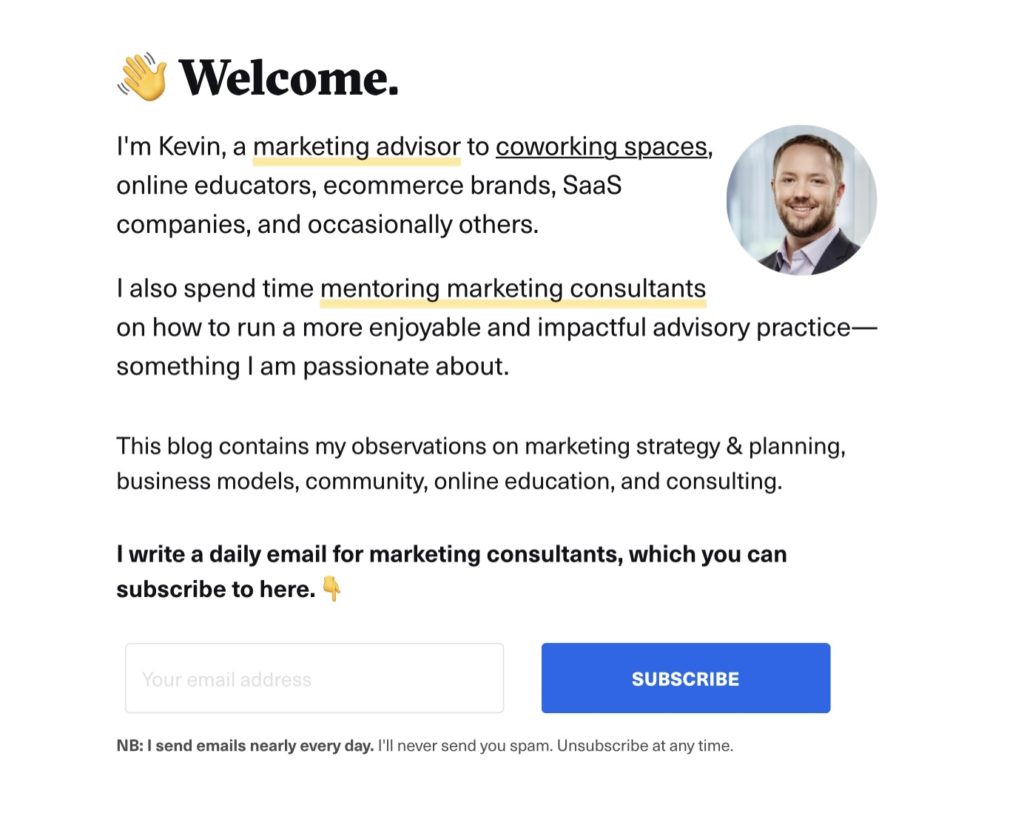The best marketing is plain, straightforward, and non-sensational.
It doesn’t care if you buy or not. It believes in its own product but doesn’t go out of its way to convince you to buy it.
It doesn’t use gimmicky tactics. It doesn’t use hype. It requires no added frills.
It simply states what it is, who it’s for, and what it does. It does so in a creative and interesting way. But that’s it.
The best marketing isn’t cute or clever. It conveys a quiet confidence that speaks for itself.
Of course, the best marketing comes from having a good customer value proposition. In other words, it sells something people actually want to buy.
Solve that and your marketing can be the best kind, too.
